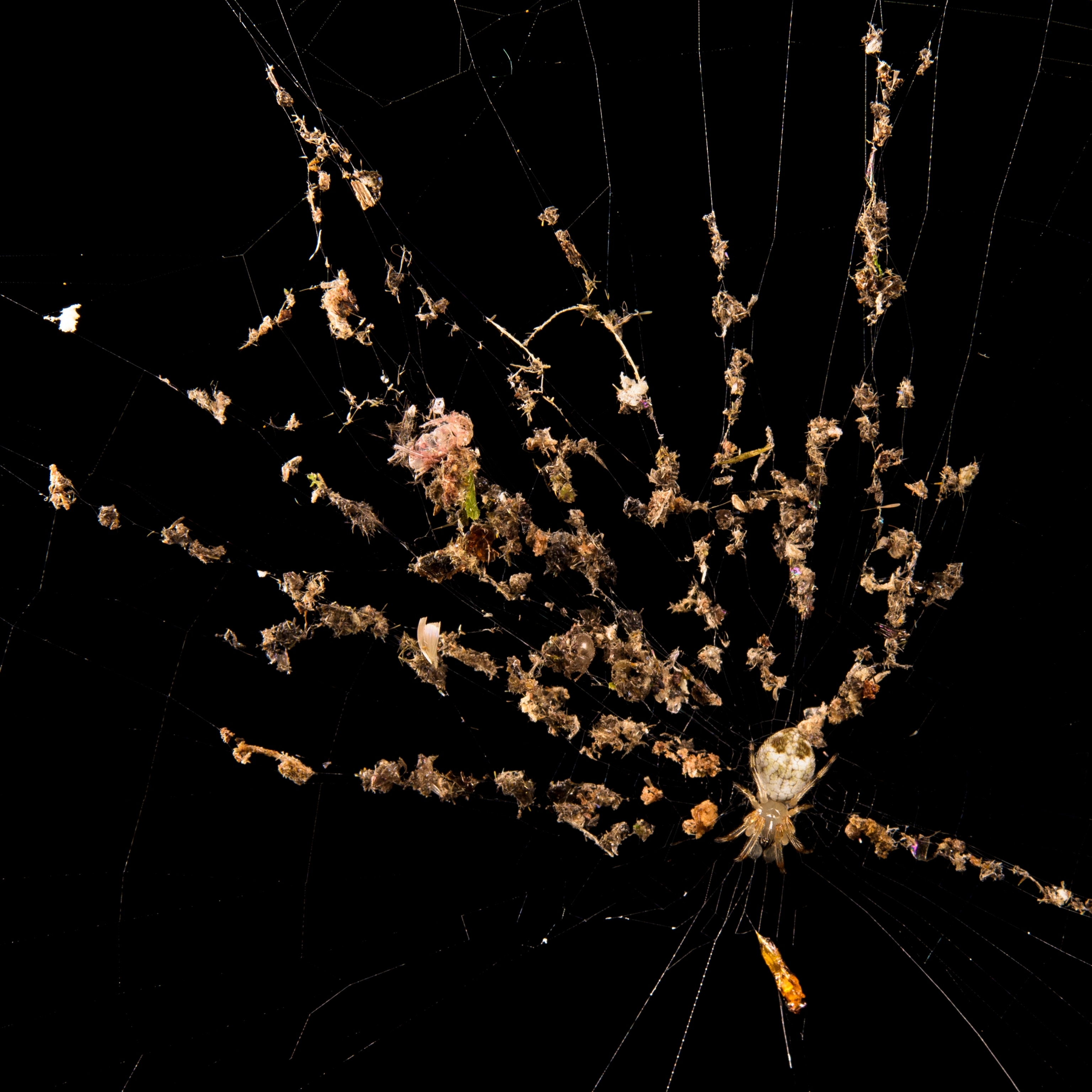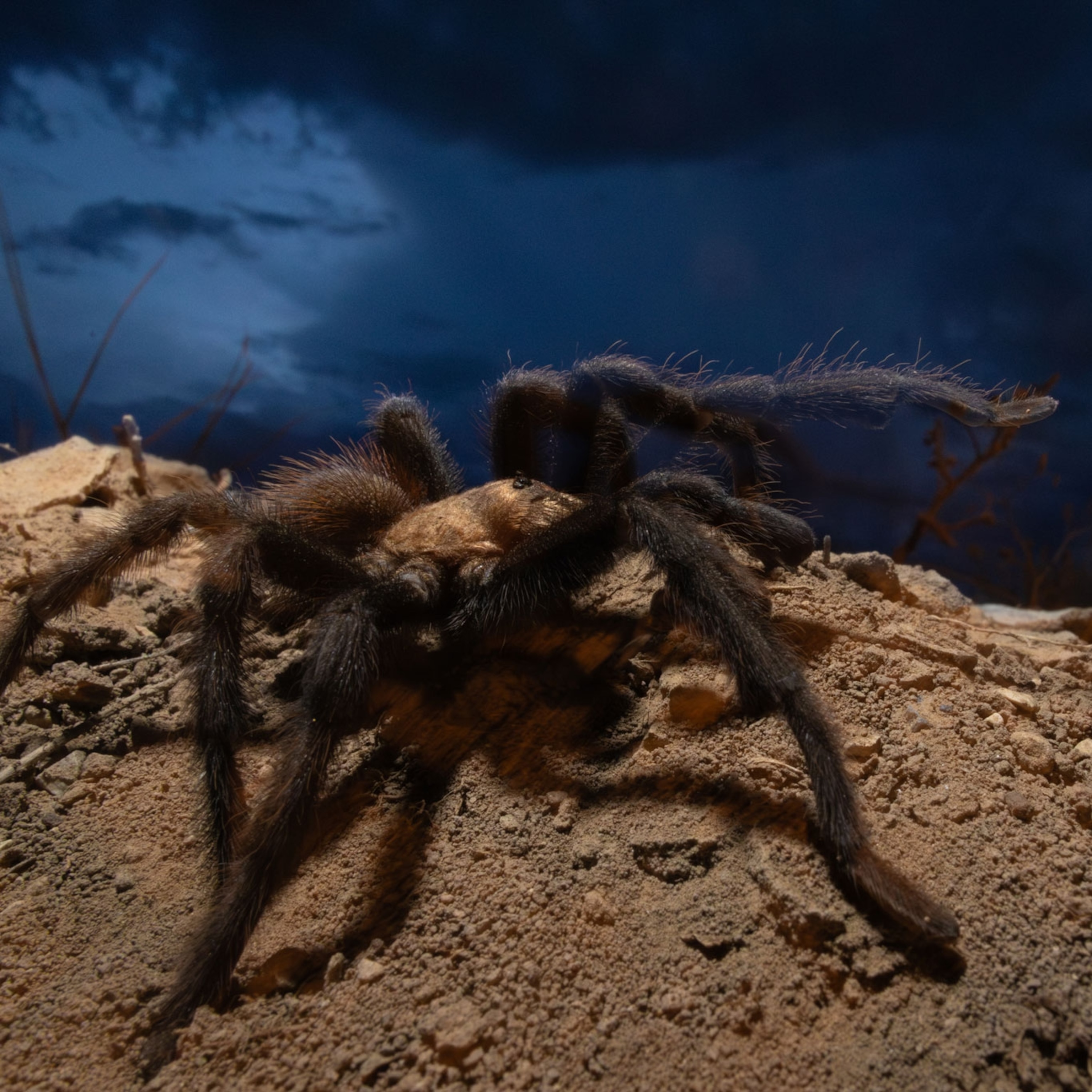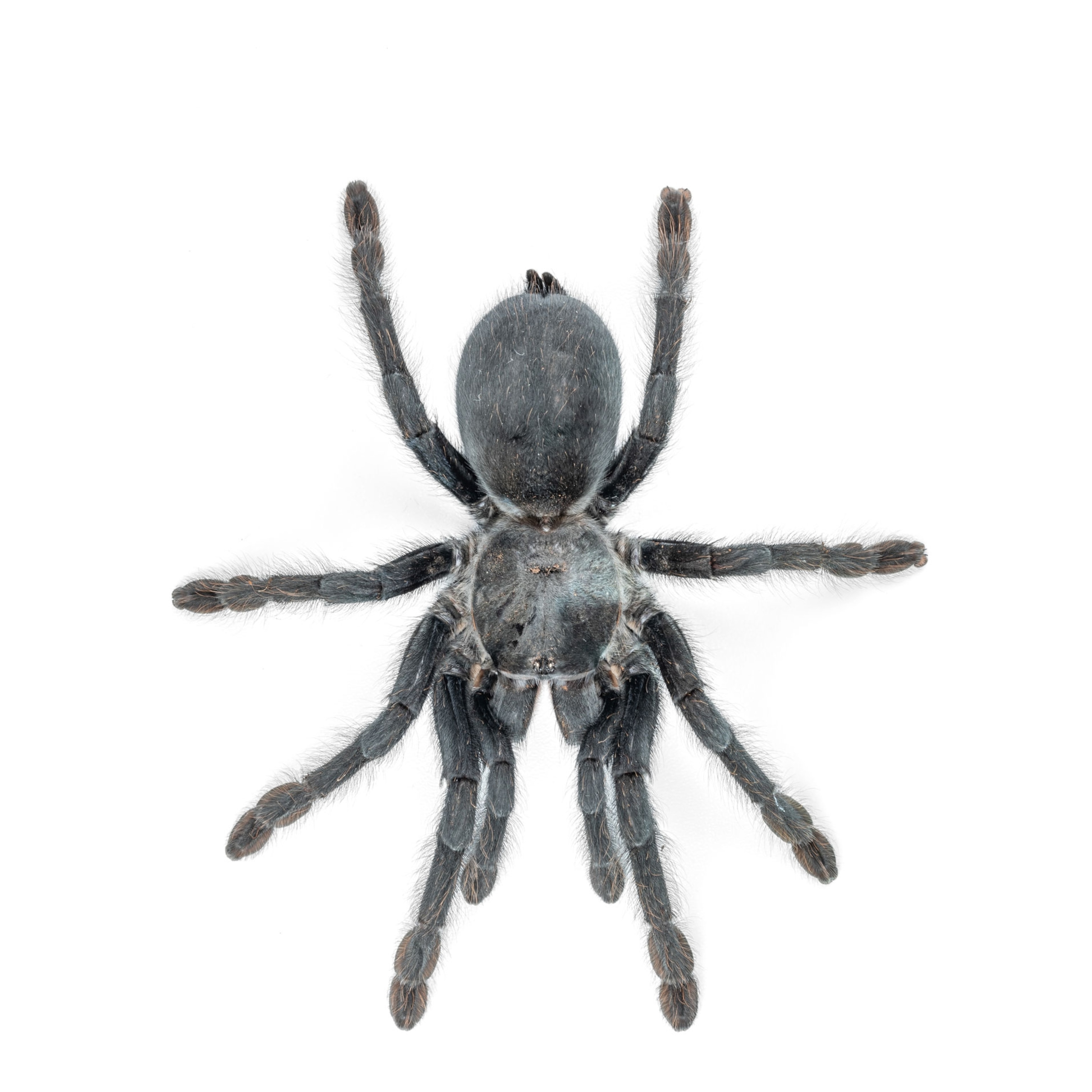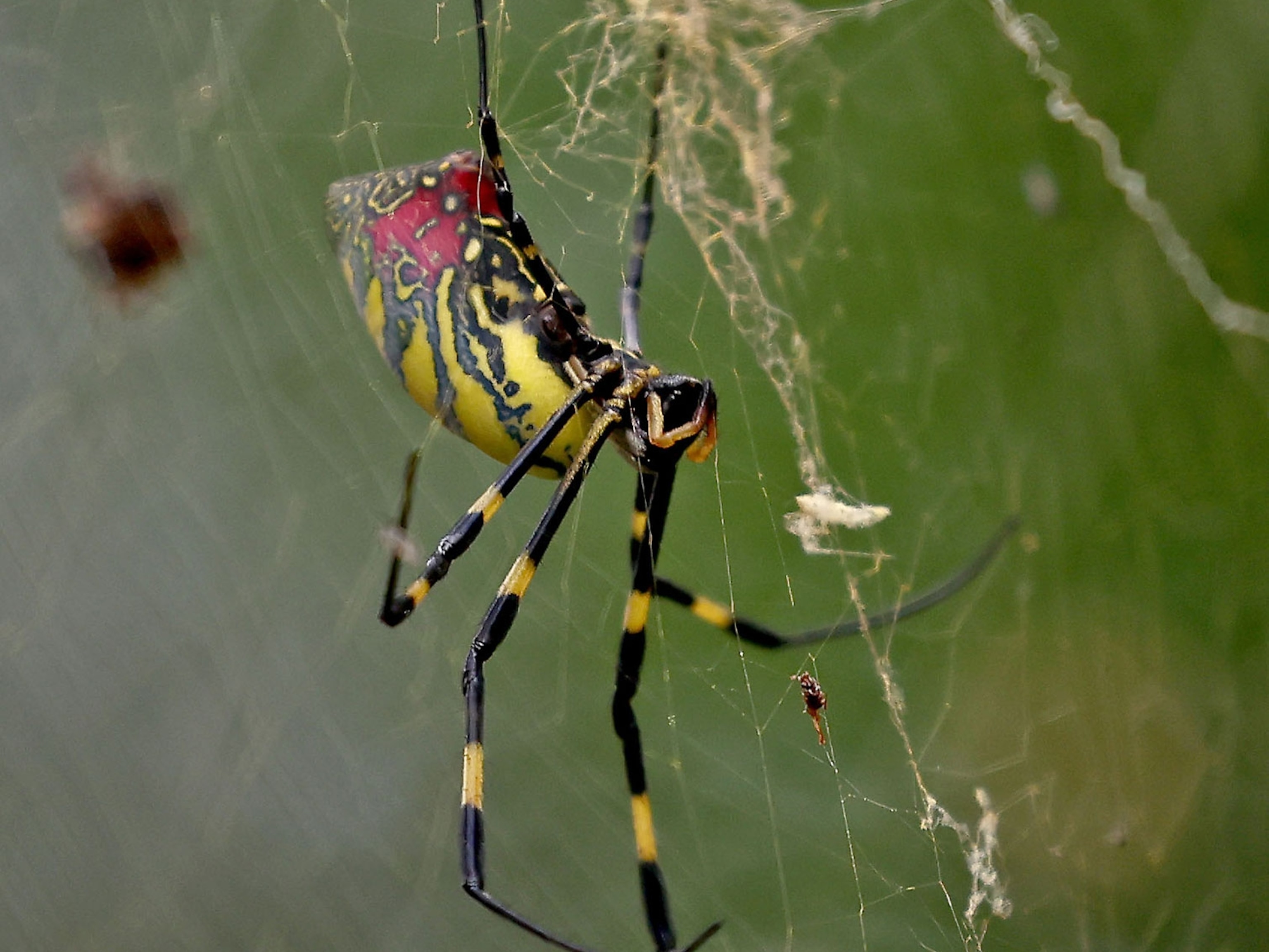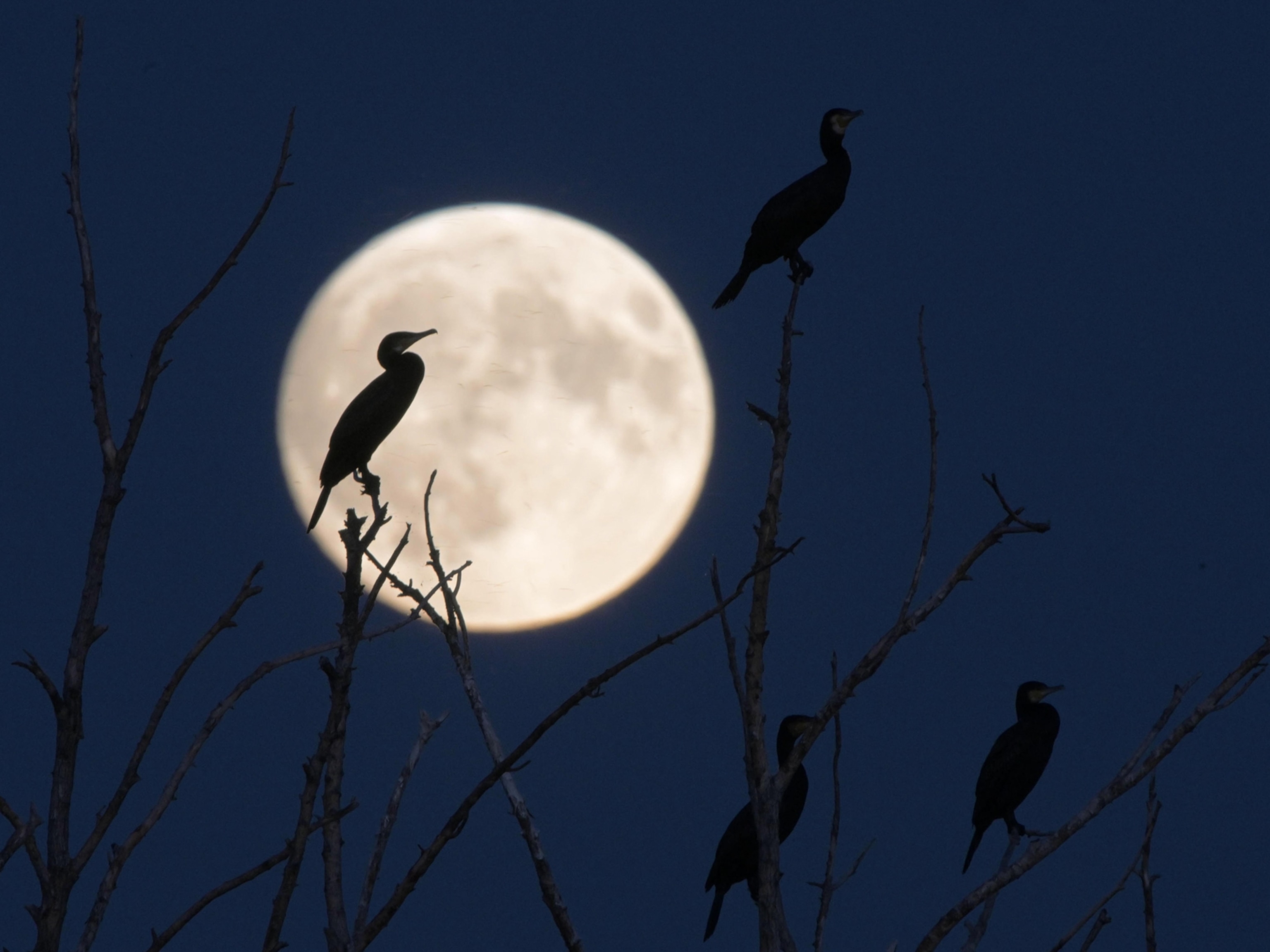
We've Learned Jumping Spiders Can See the Moon, Thanks to Twitter
Baby spiders crawling through an astronomer's office have led to a fascinating revelation.
These two things don’t come together often, but Twitter recently fostered a bit of synergistic science that has led to an amazing revelation: Tiny jumping spiders can likely see the moon.
And they’re not alone among potential stargazing arachnids: Other spiders have visual systems that are sensitive enough to discern celestial objects, experts say.
Raining Spiders
The fun began when Jamie Lomax’s office ceiling began raining baby jumping spiders last week.
Lomax, a University of Washington astronomer, and others determined that the spiders were likely Salticus scenicus, a common species referred to as zebra spiders because of their black and white stripes. (Read how jumping spiders can think ahead and plan detours.)
“Do they see in infrared light? They are literally falling/jumping off the ceiling and landing on my keyboard,” she tweeted.
An exterminator arrived and suggested that a nest had perhaps hatched somewhere above the ceiling tiles. After that, it seemed Lomax was spider-free.
But not for long.
Emily Levesque, an astronomer also at the University of Washington, began to experience the same thing.
Laser Beams
Alex Parker, an astronomer at the Southwest Research Institute, had a suggestion.
Out came the laser pointer.
When Levesque aimed a red laser pointer near one of the spiders, the arachnid seemed somewhat motivated to meander around and follow the dot. But when she aimed a green laser pointer at the same spider? The zebra spider went nuts, chasing the green spot like it was a cat.
But were the spider’s different responses to the laser colors important? What did this impromptu experiment have to say about spider eyes?
This being Twitter, it didn’t take long for those questions to find answers.
Spider Vision
Enter Nathan Morehouse, whose lab at the University of Cincinnati specializes in studying jumping spider vision.
“I was watching the Stanley Cup final and then my team lost and I was all sorts of upset about it and was like ‘Aww, I’ll check Twitter before I go to bed,’” Morehouse tells National Geographic. “And I had over 100 notifications, and I couldn’t figure out what it was all about.”
Then he realized that several astronomers had become fascinated with their interloping spiders and were trying to figure out how spider vision worked. He gleefully dove into the conversation.
He told them jumping spiders have extremely good vision. Their visual acuity, meaning how well they discern two discrete objects, is on par with cats, pigeons, and some dogs—but still not quite as good as us. Jumping spiders need stellar sight to run after and pounce on prey, rather than spinning a web and waiting. (Read: "Surprise: Jumping Spiders Can See More Colors Than You Can.")
Most jumping spiders can only see essentially two colors: Green and everything else, including ultraviolet.
So, what Lomax and Levesque observed is exactly what Morehouse expected. When Levesque’s spider saw a green spot, it naturally decided to stalk and chase it, as all good spiders (and cats) should do.
But without the ability to discern red, the zebra spider perhaps perceived that spot as a dimmer, boring shade of unexciting green, Morehouse says.
Stargazing Spiders
Inspired by the astronomers, Morehouse decided to do a quick calculation about whether jumping spiders can see the moon. After all, their eyes work like little Galilean telescopes.
With a visual acuity allowing jumping spiders to resolve objects 0.07 degrees apart, the full moon—which covers a whopping 0.5 degrees on the sky—would be easy to spot, if the spiders looked up at night.
Not only the moon, but possibly the dark patches on its face that used to be lunar lava seas.
“It just depends on how sensitive they are to the differences in brightness across the moon,” Morehouse says. “But in any event, they should be able to see the moon, they should be able to see that it’s round.”
Space and spider scientists then wondered whether any arachnids would be able to see the Andromeda Galaxy, our nearest galactic neighbor, that takes up three degrees on the sky. If it were brighter, we’d be able to see it more easily, but our eyes aren’t quite sensitive enough to make it out most of the time.
Turns out, the ogre-faced spider would probably be able to gaze upon Andromeda, Morehouse discovered. (Read more animals with giant eyes.)
These nocturnal, big-eyed beauties hang upside down and chuck handfuls of sticky nets at passing insects. Being active at night, their huge eyes are incredibly sensitive to low light levels, so something as dim as Andromeda would pop.
"I Can't Kill Them Now"
“I had never thought to do the back-of-the-envelope calculations about whether jumping spiders could see the moon,” Morehouse says.
“And then it was totally fun for me to begin thinking about stargazing spiders and what they would be able to see if they looked up at night. It’s a totally wonderful, fanciful thing.”
And Lomax, whom we can thank for this fantastic intersection of disciplines, seems to agree.
“After all I've learned on Twitter over the past 24 hours, spiders are way more interesting and a little less creepy than I had previously thought,” she says.
“They can see the moon just like me! I can't kill them now that I know that.”

